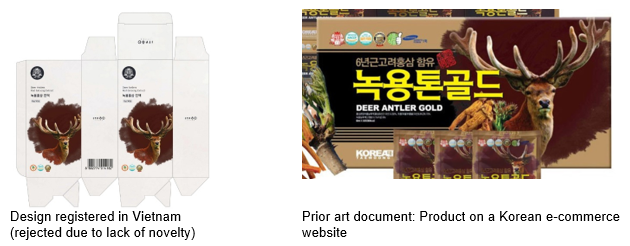Registering Industrial Designs in Vietnam: 6 Mistakes to Avoid and Secrets to Successful Registration
The unique industrial design (ID) of a product is a key feature that sets it apart and attracts customers for businesses. To protect this creative achievement and maximize profits, registering the ID is of great importance. However, deciding when to file for ID registration – before or after trademark registration, before or after launching the product on the market, and understanding which IDs can or cannot be registered – are issues that not all businesses are well-versed in. A current reality facing businesses is that, due to a lack of understanding of the regulations on ID protection in Vietnam, numerous businesses have wasted time and resources when their ID applications are rejected, severely affecting their competitiveness and economic interests.
KENFOX IP & Law Office, with 15 years of experience in advising and handling complex IP disputes, analyzes and identifies the six most common mistakes to help businesses minimize the risk of rejection and optimize their ID protection strategies in Vietnam.
1. Wasting Resources on Registering Non-Standalone Industrial Designs
Certain objects that cannot circulate independently are not protected under industrial design (ID) regulations.
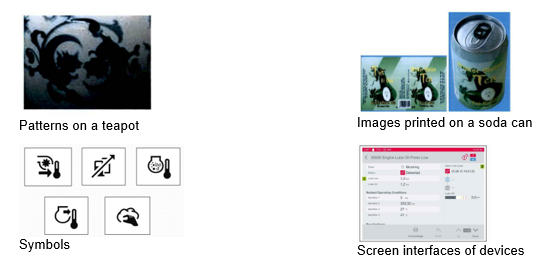
The Intellectual Property Office of Vietnam (VNIPO) has rejected many ID applications based on Article 4.13 of the 2022 Intellectual Property Law: “An industrial design is the external appearance of a product or a part to be assembled into a complex product, expressed in shapes, lines, colors, or a combination of these elements and visible during the exploitation of the utility of the product or complex product”. An industrial design must be the external appearance of a complete product or a part that can be separated and circulated independently (detachable part). A product is understood to be an object, tool, device, means, or part used to assemble and constitute these products, produced by industrial or handicraft methods, with a clear structure and function, and circulated independently. This means that (i) only complete products and detachable parts of products can be registered as industrial designs, and (ii) if a part of the product cannot be separated (detached) from the product, it cannot circulate independently and therefore cannot be registered for ID protection.
2. Which IDs Are Not Eligible for Protection?
Not all external appearances of products are eligible for protection as industrial designs. Applications for the following industrial designs will be rejected:
[i] External appearance of civil and industrial construction works.
The external appearance of civil and industrial construction works is primarily determined by functionality and construction techniques rather than aesthetics. Protecting industrial designs for these works could hinder the overall development of the construction and architectural industries.

[ii] Objects with an external appearance dictated by technical features
The shape of the product is determined by its function and technical requirements, resulting in minimal creative elements. Protecting the design of such objects may create monopolies, limit competition in the same field, and hinder innovation, creativity, and overall industry development.

[iii] Objects with invisible external appearance during use
[iv] Objects violating State IP policies: Designs of counterfeit money machines, letter bombs, or products inciting violence, war, ethnic, and religious division; designs that are obscene or contrary to social moral standards.
[v] Designs of products featuring portraits of Vietnamese and foreign leaders, national symbols, symbols of state agencies, and national or international organizations without authorization from the competent authorities.
3. Novelty – A “Fatal” Mistake to Avoid for Industrial Design Protection
Novelty is one of the fundamental requirements for an industrial design to be protected. If the industrial design does not meet the novelty criteria, the application will be rejected, and the business will lose the exclusive protection rights. Ensuring the novelty of an industrial design is not only mandatory for ID protection but also helps avoid risks such as loss of novelty, denial of protection, and waste of time and financial investment in the registration process.
What if it’s new in Vietnam but already exists in other countries? An industrial design requires “absolute novelty” meaning it must not have been published or disclosed anywhere prior to the application date. According to Article 65 of Vietnam’s IP Law, an industrial design is considered novel if it significantly differs from those that have been publicly disclosed before the application date. This includes IDs that have been used, described in writing, or disclosed in any other form domestically or internationally.
Releasing a product to the market before registration will result in the industrial design losing its novelty and thus not being eligible for protection. Consequently, the business will not have its industrial design protected, losing exclusive exploitation rights, and the design can be easily copied or imitated. Introducing the product to the market in any form before filing for industrial design protection, including its packaging, will make the design accessible to the public, thereby losing its “novelty” for protection purposes. Additionally, packaging and product designs that are “not fundamentally different” from existing products on the market will also be considered lacking in “novelty.” To avoid this, businesses should “search for the protectability” of their product designs and proceed with “filing” for industrial design protection before the product is disclosed or released to the market. This ensures that the industrial design retains its novelty and is protected by law.
4. Errors in Photos and Drawings of IDs Leading to Application Rejection
The scope of protection for an ID is determined by the ID Patent, the decision to grant protection for an internationally registered industrial design, or the extract from the national register of industrial property (Article 76, Decree 65/2023/ND-CP). The set of photographs is a required document that the applicant must submit when registering an industrial design, based on which VNIPO has the basis to clearly understand, examine, and assess whether the ID meets the protection conditions.
Therefore, the set of photographs or drawings in the industrial design registration dossier is the most important document, needing to visually and clearly depict the details, proportions, and structural features of the industrial design. These photographs and drawings are used by VNIPO to compare and contrast with those of existing industrial designs to assess whether the design meets the protection criteria (novelty, creativity, distinctiveness, and protectability).
Errors in the set of photographs can lead to serious consequences such as the rejection of the industrial design registration application, a narrowed scope of protection, and potential legal disputes between the applicant and related parties.
In practice, VNIPO has rejected many industrial design applications due to photographs or drawings not meeting the requirements.
[i] Inconsistent photographs/drawings, where photographs are included in the drawings and vice versa.

[ii] Photographs/drawings are broken, blurred, unclear, or not sharp. The photographs/drawings must be of good quality to accurately depict the shape of the industrial design. Unclear images/drawings can lead to misunderstandings and make examination difficult.

[iii] Photographs/drawings contain broken lines or are out of focus.

[iv] Missing photographs/drawings from one or more specific angles.
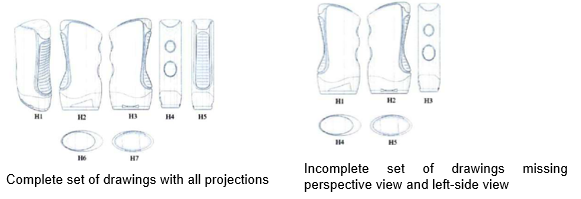
[v] Photographs/drawings are not to scale. Images/drawings need to be drawn/photographed to the correct scale to ensure accuracy in the dimensions and shape of the industrial design. Deviations in scale can lead to misunderstandings and affect the evaluation.
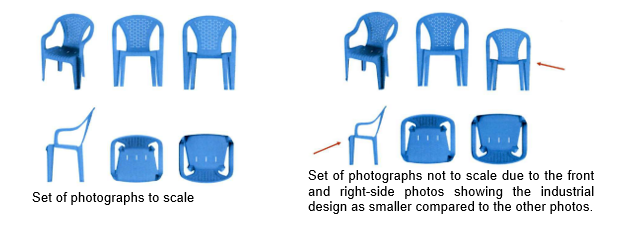
[vi] Photographs/drawings are not oriented in the same direction
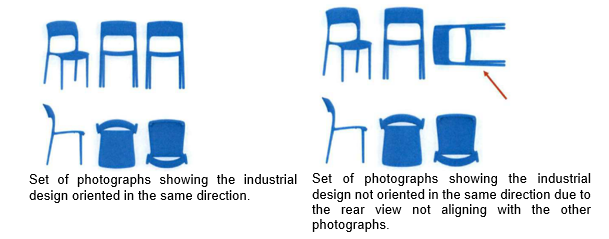
[vii] Photographs/drawings with non-orthogonal projections

[viii] The background of the photographs/drawings is not uniform in color and does not contrast with the color of the industrial design. The photographs/drawings are confused with other objects.
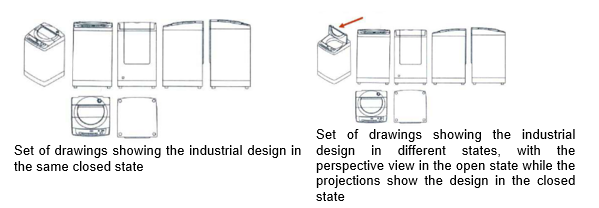
[ix] Photographs/drawings do not show the industrial design in the same selected state of use
5. Avoiding “Traps” Leading to Description Rejection
An unsatisfactory industrial design description can lead to the rejection of the registration application. Consequently, the business will have to comply with a series of obligations such as supplementing and amending the description and responding to office actions within the statutory period. In some cases, the applicant may even incur additional fees. More seriously, if the amendments and supplements do not meet the requirements, the industrial design application will be rejected.
According to Circular No. 23/2023/TT-BKHCN, an industrial design description will be considered unsatisfactory in many cases. To avoid these “traps,” businesses should note the following:
- The name of the industrial design must match the product: The name must accurately describe the product and should not be confused with another company’s product.
- The field of use of the industrial design must be precise: The field of use must align with the intended use of the product.
- Accurately list the names of photographs/drawings: The names of the photographs/drawings must accurately describe their content.
- Fully describe the external features of the industrial design: The description must clearly and comprehensively reveal the external features, including shape, dimensions, structure, patterns, colors, etc.
- Ensure the description matches the photographs/drawings: The description must match the content of the photographs/drawings.
- Specify the designs in the application: If the application includes multiple designs, the description must clearly state whether these designs are variations or a set of products.
- Valid scope of protection: The scope of protection must comply with intellectual property laws (objects that are not accepted for protection in Vietnam or lack a valid scope of protection).
6. Avoid Overconfidence in Your ID Application
- Inconsistent information among related documents such as the application form, power of attorney, priority documents, and description.
- Invalid power of attorney: issues may include missing or incorrect authorization scope, signing date after the application submission date, lack of signature, etc.
- Invalid information: incorrect classification, applicant being a legal entity, etc.
- Missing one or more mandatory information fields in the application form.
- Incomplete payment of national fees and charges for the industrial design application.
- Failure to submit supplementary documents within the prescribed deadlines, such as the power of attorney or priority documents.
The Secret to Successfully Securing ID Protection in Vietnam
The path to successfully registering industrial design protection is not easy. Hidden legal “traps” in the registration process are ever-present, leading to many applications being rejected due to preparation errors or omissions. However, by clearly identifying the legal risks mentioned above, businesses can find ways to successfully navigate them. KENFOX shares the following steps to minimize errors and ensure successful industrial design registration in Vietnam:
- Accurately identify the objects eligible and ineligible for industrial design protection.
- Protect the confidentiality of the product design before filing the registration application.
- Prepare a proper set of photographs/drawings.
- Prepare a perfect industrial design description.
- Thoroughly review the industrial design application dossier.
- Determine the appropriate time to file the industrial design application.
- Conduct a search and assess the protectability of the industrial design before filing the application.
Final thoughts
Protecting industrial designs plays an important role in protecting the “creative heart” of a business, ensuring competitive advantage, and paving the way for sustainable success. However, the ID registration journey can be fraught with obstacles and challenges. To optimize effectiveness and minimize risks, businesses should entrust their applications to reputable IP Agents – experienced IP experts and lawyers with in-depth knowledge in this field. These professionals can help streamline the process, complete procedures quickly and cost-effectively, reduce errors, and increase the chances of successful ID protection, ensuring comprehensive protection for the business.
Contact KENFOX IP & Law Office today to receive free consultation and protection for your creations and brand. KENFOX offers protection services for industrial designs, trademarks, patents, and copyrights in Vietnam and worldwide. With over 15 years of experience, KENFOX is committed to providing you with the most effective and professional IP solutions.
QUAN, Nguyen Vu | Partner, IP Attorney
NGA, Dao Thi Thuy | Senior Patent Attorney
ANH, Nguyen Thi Kim| Patent Executive
Related Articles:
- Opposing an Industrial Design Application in Vietnam: What secrets to Successful Opposition?
- New product launch: How to keep your product design from being “stolen”?
- Industrial Design Related Matters in Vietnam
- Industrial design protection for products under the Hague System – Key to business success in Vietnam
- To register or to lose, a costly lesson from a typical industrial design dispute in Vietnam
- Provisional rights to patents and industrial designs in Vietnam – What you need to know?
- Industrial Design Or Copyright Protection, Which You May Be Unaware Of?
- What are Key Considerations for Industrial Design Divisional Application in Vietnam?
- Copyright – a powerful and effective weapon to repress trademark and industrial design infringements in Vietnam
- 10 Key Points from Vietnam’s New IP Decree No. 65/2023/ND-CP
- Handling intellectual property rights infringement in Vietnam: Which measures are effective?
- Difference between Copyright and Industrial Design Right
- Amendments to patent and industrial design regulations under the draft of the amended Intellectual Property Law


